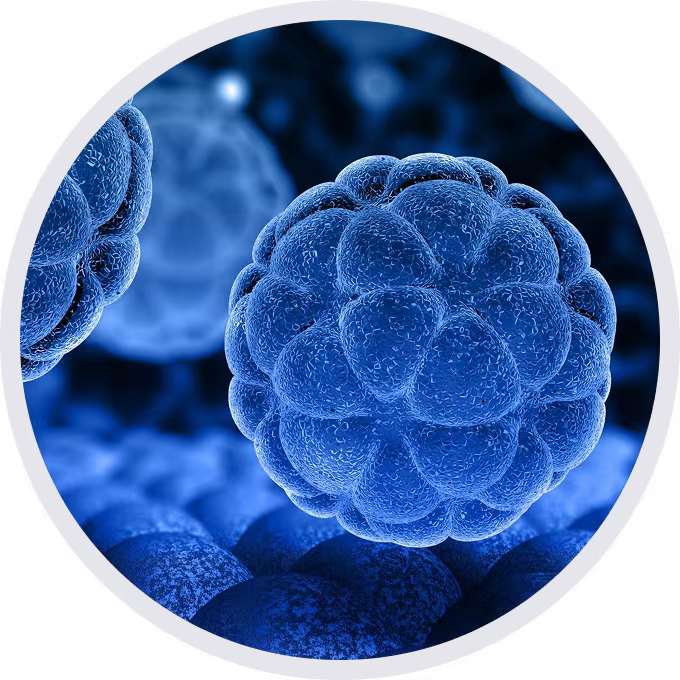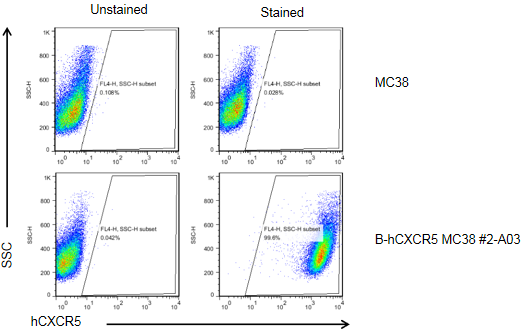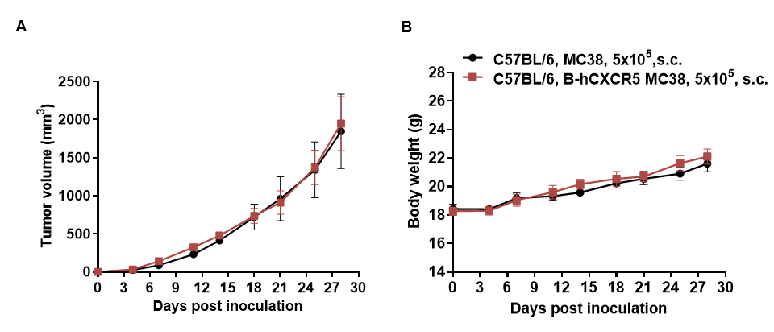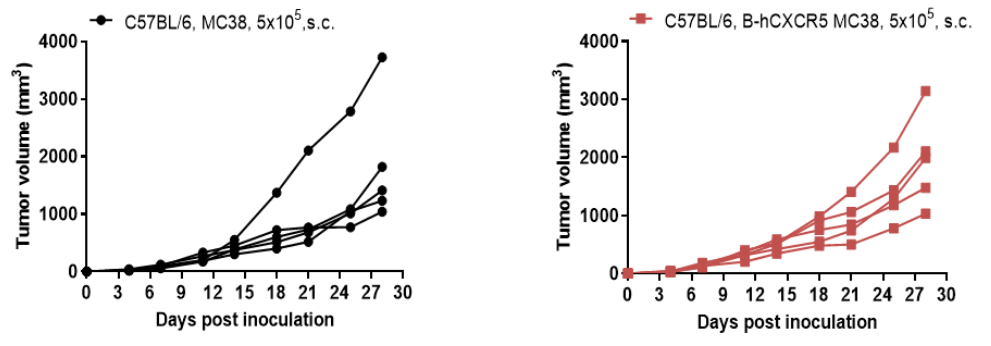


• 311084

| Product name | B-hCXCR5 MC38 |
|---|---|
| Catalog number | 311084 |
| Strain background | C57BL/6 |
| Aliases | BLR1, CD185, MDR15 |
| Tissue | Colon |
| Disease | Colon carcinoma |
| Species | Mouse |
| Application | B-hCXCR5 MC38 cells have the capability to establish tumors in vivo and can be used for efficacy studies. |
on this page
The mouse Cxcr5 gene was replaced by human CXCR5 coding sequence in B-hCXCR5 MC38 cells. Human CXCR5 is highly expressed on the surface of B-hCXCR5 MC38 cells.
Gene targeting strategy for B-hCXCR5 MC38 cells. The exogenous promoter and human CXCR5 coding sequence were inserted to replace part of murine exons 1~2. The insertion disrupts the endogenous murine Cxcr5 gene, resulting in a non-functional transcript.

CXCR5 expression analysis in B-hCXCR5 MC38 cells by flow cytometry. Single cell suspensions from wild-type MC38 and B-hCXCR5 MC38 cultures were stained with species-specific anti-CXCR5 antibody. Human CXCR5 was detected on the surface of B-hCXCR5 MC38 cells, but not on the surface of wild-type MC38 cells. The 2-A03 clone of B-hCXCR5 MC38 cells was used for in vivo experiments.

Subcutaneous homograft tumor growth of B-hCXCR5 MC38 cells. B-hCXCR5 MC38 cells (5x105) and wild-type MC38 cells (5x105) were subcutaneously implanted into C57BL/6 mice (female, 7-week-old, n=5). Tumor volume and body weight were measured twice a week. (A) Average tumor volume ± SEM. (B) Body weight (Mean ± SEM). Volume was expressed in mm3 using the formula: V=0.5 X long diameter X short diameter2. As shown in panel A, B-hCXCR5 MC38 cells were able to establish tumors in vivo and can be used for efficacy studies.

B-hCXCR5 MC38 tumor growth of individual mice. B-hCXCR5 MC38 cells (5x105) and wild-type MC38 cells (5x105) were subcutaneously implanted into C57BL/6 mice (female, 7-week-old, n=5). As shown in panel, B-hCXCR5 MC38 cells were able to establish tumors in vivo and can be used for efficacy studies.